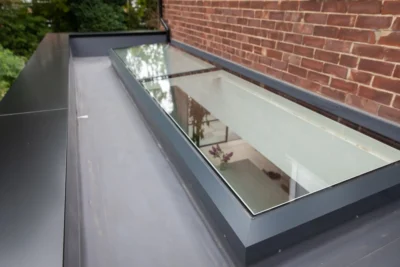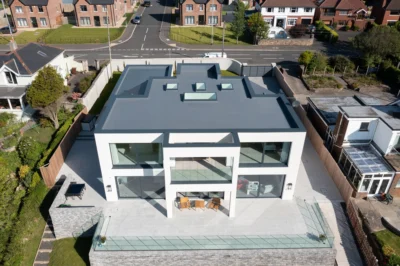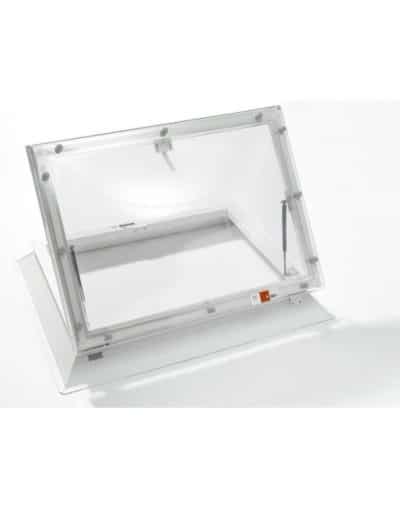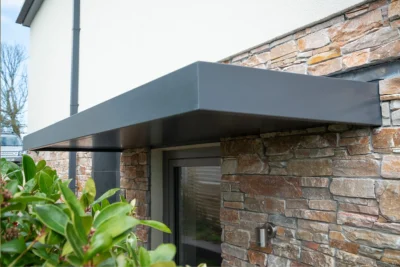Off Mains Foul Water Drainage Solutions
The removal of foul waste (ie sewage) via a suitable drainage system is something we tend to take for granted in our homes.
The waste from our toilets, sinks, dishwashers, washing machines and showers – basically anything that gets drained or flushed away – usually disappears without us having to think about where it’s going. But if you’re self building, you need to make sure everything’s in place to get it removed safely.
Connecting to mains foul sewerage is the most practical and cheapest solution for a lot of self builders, but for many rural plots this isn’t available.
There are various ways to control foul waste if you haven’t got a mains connection. Whatever is collected will either be removed by tanker, filtered into surface water or into the ground.
Learn more: Cost Guide to Drainage and Services
Before I go into details about how to manage discharging sewage, here are the five main options for collecting and storing the waste:
1. Septic tank
This is the most common solution, but be aware that it’s often referred to as a general term for all off-mains foul drainage. It is a single chamber, originally constructed out of brick, but more recently from either concrete or GRP in an onion shape with a tall cylindrical tube providing access from the top.
All of your foul waste ends up in the chamber where solids mostly sink to the bottom and the liquids (effluent) are then allowed to naturally drain into the surrounding soils. Over time, the solids build up as a thick sludge in the container’s base and need to be emptied by a tanker.
This process is known as desludging and most domestic vessels, regardless of age, will need to be emptied once a year. There is no treatment to the effluent before it leaches away; however, these liquids are considered both raw and toxic, so there is a lot of emphasis nowadays on where and how the effluent is discharged.
2. Treatment tank
A more recent invention, these were developed to deal with the toxicity of the effluent. They are generally a bit larger than septic tanks as the chamber is divided into sections to separate liquids from sludge and move them between chambers before final discharge.
One of the key differences between septic tanks and treatment plants is the type of bacteria used. The former are effectively sealed up, so only anaerobic bacteria survives.
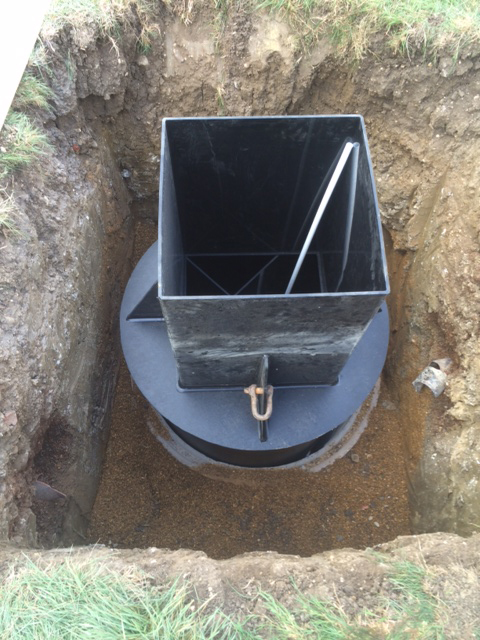
The installation of a treatment tank
In a treatment plant, the introduction of either blown air or a rotating disc is so oxygen allows aerobic bacteria to thrive, increasing efficiency. This breaks down the nitrates in the liquids and starts the digestion process of the smaller solids.
Sludge is built up and needs to be emptied, but the effluent is treated before discharge and could therefore safely flow to a water course if need be. These units run off electricity, so you’ll need a power supply.
As there are moving parts inside, it will need maintenance and repair from time to time. Be aware that you’ll need to use bio-friendly detergents in the house as bleach-based cleaning products will kill the unit’s bacteria and render the system dysfunctional – the same goes for septic tanks.
3. Cesspool tank
This is the largest solution and is completely sealed. There is only an inlet pipe and all the contents must be removed by tanker through the access tube or inspection lid at the top of the unit.
A cesspool is the best solution if the surrounding soils on your plot have very little porosity, which means the effluent would have nowhere to go. It’s an expensive option, both for installation due to size and because of the cost of getting it emptied.
Typical family use means the need for a tanker to empty the unit around every six weeks, which could be as much as 10 times the annual cost of having the sludge from a septic tank or treatment tank removed. Also, be aware that cesspools are not permitted in Scotland.
4. Trench arch drain
This is unlikely to be an acceptable option for a home and instead might be selected for use in low-volume situations, such as a rural church. Typically, a trench arch drain might be able to cope with up to 100 litres of waste water per day. They rely on good porous soils to quickly drain the effluent.
A long shallow chamber is constructed from concrete blocks and paving slabs or an upturned wide diameter pipe cut in half to make an arched top over a void with a bed of porous stone.
The inlet pipe carries waste into the chamber where its speed of entry allows it to spread; the liquids quickly drain away to leave the solids to sit quite dry so that they can aerobically decompose.
5. Dry composting toilet
These don’t use water, instead separating the human waste between liquids and solids for fast decomposition. But choosing to compost your WC waste is only half the story – this doesn’t offer a solution for waste water from showers, sinks etc, so you’ll still need an effective off-mains solution (more about these toilets above).
Types of water waste:Foul waste can be subdivided into two categories – toilet waste is known as black water and everything else from the house is grey water. Neither should be confused with surface water, which needs to have its own separate drainage solution. |
Legislation
Small domestic off-mains sewage and waste water management is governed by the Environmental Permitting Regulations 2014, which are then enforced by the Environment Agency (EA).
Under this statute you are required to have an environmental permit for any discharge from either a septic tank or a treatment tank, unless you are completely compliant with what’s known as the general binding rules (GBR). These GBRs are subdivided into discharges that go directly into the ground (soils) and those that lead to a water course (surface water) – more on both of these in a moment.
New rules came into force at the beginning of 2015 and any installation after this date is known as a new discharge, any before referred to as existing discharge. This is important for anyone buying an existing house where they are inheriting an off-mains drainage solution that may or may not have been recently upgraded.
Those looking to use a trench arch drain for low capacity solutions need to seek a permit from the EA. Anyone installing a dry composting toilet should comply with the GBR for discharges to ground for both the unit itself and their drainage solution for grey water. The installation of
a septic or treatment tank is also subject to approvals from both planning and building control.
Discharge to surface water
Liquids from a septic tank are no longer allowed to go directly to a river or a stream; if you have an existing discharge that does, then it will need to be upgraded by 1st January 2020.
If there’s still no mains drainage option, you’ll either have to replace the septic tank with a new treatment setup or introduce a drainage field (infiltration system) so that the septic tank can discharge to the ground instead of the water course.
A reed bed in lieu of the drainage field could effectively bring your effluent to the same standard as from a treatment tank, but it would need EA approval. Alternatively, you could accept that you no longer qualify with the GBR and apply for a permit, although it’s rare for any deviation to be allowed.
Treatment tanks must meet the correct design standards with appropriate certification, including for its installation. The maximum discharge allowed in any one day is 5,000 litres – any more would require an EA permit. The tank must be regularly de-sludged and at the same time inspected for leaks, cracks, blockages etc.
When selling the property, the owner has an obligation to provide the purchaser with the system’s design details, plus evidence of emptying, maintenance and any repairs that have been carried out.
For new discharges, compliance with the GBR will not be allowed if there is a mains drainage solution within 30m of the property, as this is the preferred default option. If the new discharge is within 500m of special areas of conservation and other protected areas, then the use of GBR will not be allowed and an application for a permit to the EA must be made.
Surface water also means flowing water; if your stream or river is prone to drying out, to comply with GBR, you may need to introduce a partial drainage field to act as a seasonal soakaway.
Discharge to ground
Septic tanks and treatment tanks can be used with discharges to ground as long as the effluent passes through a infiltration system or drainage field. This involves a series of perforated pipes in trenches surrounded by porous materials so that the effluent can trickle into the ground for further treatment.
Dry composting toiletsPerhaps not everybody’s first choice, but this solution is a clever idea worth looking into. The design rationale behind dry composting toilets is based on a separation of solids and liquids at the point of use. The urine is channelled away to a compliant soakaway and the dry solids, and presumably tissue paper, collected in a chamber to naturally compost. Soak layers are used periodically to cover the solids, which will be something like wood shavings that help keep the solids dry whilst adding carbon to the nitrogen for a more balanced compost output. One of Natsol’s units has two storage chambers and two access hatches for the toilet pan so that after one chamber has reached its limit, the pan can be swapped to start using the next one. The chambers are vented to remove odour. Ideally the solids are left to compost for up to a year before they are removed and reintroduced to the garden, but not your vegetable patch. Planned effectively, these toilets can provide a comfortable option for remote sites where water and electricity supplies are complex or where sustainability is key. In terms of costs, they can make a compelling case for medium term payback through low consumption costs and eliminating the need to get a tanker in. |
A soakaway, well or bore hole, typically used for draining surface water, cannot be used for discharging effluent to ground. For existing ones, you have to upgrade to a drainage field or apply for an EA permit. The max daily discharge to ground is 2,000 litres, so significantly less than to surface water.
If you are in a groundwater source protection zone (SPZ1) you could either be close to a commercial water supply or next door to a property with a private water supply used for human consumption.
In these circumstances GBR for discharge to ground cannot be used and you must apply for a permit for both existing and new installations. Thereafter the same rules and obligations exist as for those to surface water detailed above.
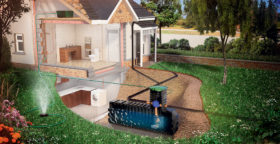
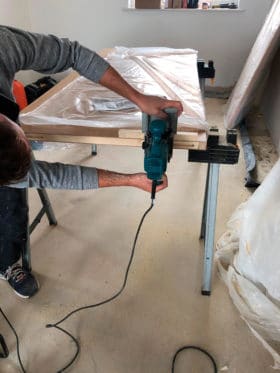















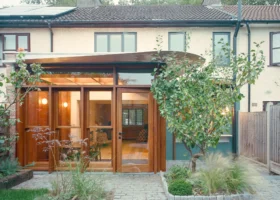















































































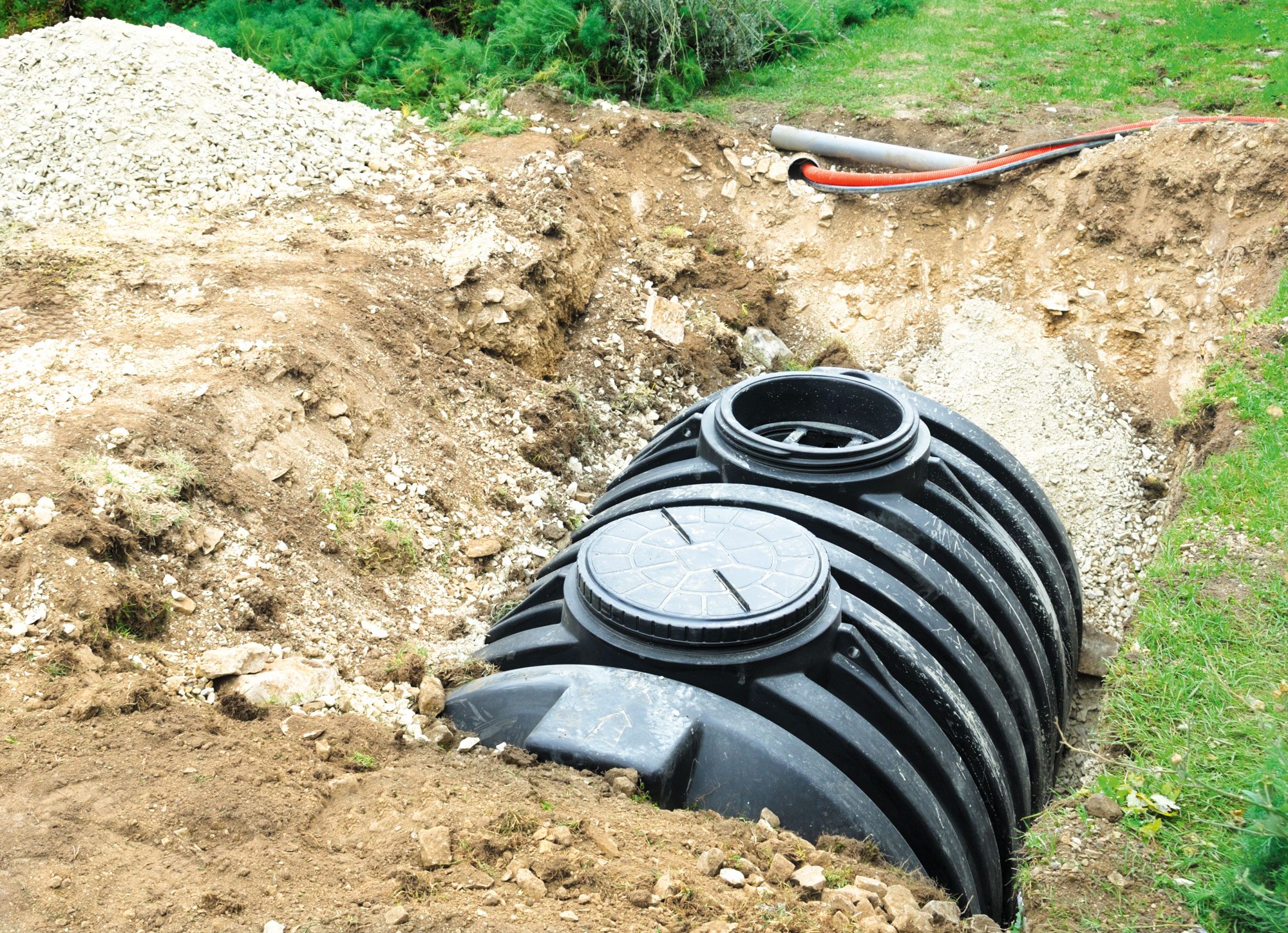
 Login/register to save Article for later
Login/register to save Article for later




